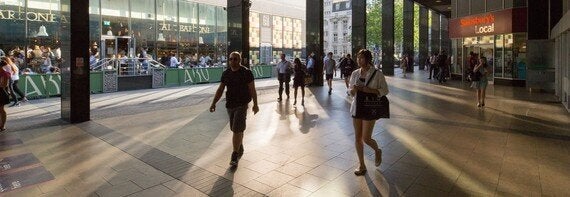If you've read any of my posts before you'll know that, for the most part, I believe that the major infrastructure projects planned for the Camden and Euston area can lead to big wins for local regeneration and economic growth.
Camden Town Unlimited and Euston Town are two business improvement districts operating in an area that will soon become a major works zone. Our local business members are hopeful about Crossrail 2 and the redevelopment of Euston Station.

Detailed plans are now being drawn up before the Crossrail 2 Bill is presented to Parliament. Before this happens, however, the Government needs to communicate a clear vision for the project. I believe that, from a business perspective, there are two key questions that need to be answered.
1.What is the purpose of Crossrail 2?
If we are to take arguments about increased capacity and better connectivity as a given, we can start to think about who and what this new line will actually work for.
A starting point is to consider the route itself. The line will extend the transport network out to Hertfordshire in the north east and Surrey in the south west, bringing the capital closer to residents and commuters in the counties.
Through central London it then connects major day-trip and tourist destinations such as the high-end shops on the King's Road via Chelsea, Buckingham Palace via Victoria and the heart of the West End via Tottenham Court Road.
In sum this is a markedly different route to its sister line, Crossrail 1, which will soon start running trains between Berkshire and Essex.
Crossrail 1 has a far different design, running through major hubs like Heathrow Airport, Liverpool Street, Canary Wharf and Stratford. In this respect it is very much a 'business line' connecting major transport and commercial centres.
The commercial tenants that make-up our membership will be contributing to the funding of Crossrail 1 via the 2% supplementary business rate well into the 2030s. One of the options on the table is to extend this into the 2060s to cover Crossrail 2, in order to raise 15% of the funding.
We are therefore quite concerned that businesses - and that's commercial tenants rather than landowners - will be levied for the new scheme.
In short, private renting companies will end up paying out for another thirty years for little short-term return. If we are going to ask London to part-fund the scheme, we need to have a real understanding of who the major beneficiaries of this project will be.
It seems to me we need to consider how this affects properties along the route and put a greater emphasis on funding the line by capturing the rise in value it will inevitably bring.
2.How can we maximise the benefits of the project in terms of driving economic growth?
Planners on major rail infrastructure projects rightly prioritise station redevelopment as a driver of local regeneration.
When they get this right, businesses respond in kind, opening up to catch the pedestrian footflow, bringing key services and choice to an area.
Close to home, we want to see this happen in Euston - where Crossrail 2 will stop - but we're concerned that we may not see the comprehensive redevelopment that the Chancellor himself has talked-up.
Euston is the gateway to the Midlands and the North West and serves as a major central London interchange; but it isn't currently fit for purpose.

For Crossrail 2 (and HS2) to generate local economic growth, we need to reconsider the station's positioning, so that it's no longer southward facing and inaccessible to pedestrians from the north, east and west.
Regeneration and economic growth should therefore be front of mind for the Government as it moves forward. Business can help, but if only if the station design lets it.
We are clear that Crossrail 2 will bring vast benefits to the capital, but it is essential that the project's costs and benefits are weighed up and distributed fairly. Only then can it communicate a clear idea of what the route will do for London.
